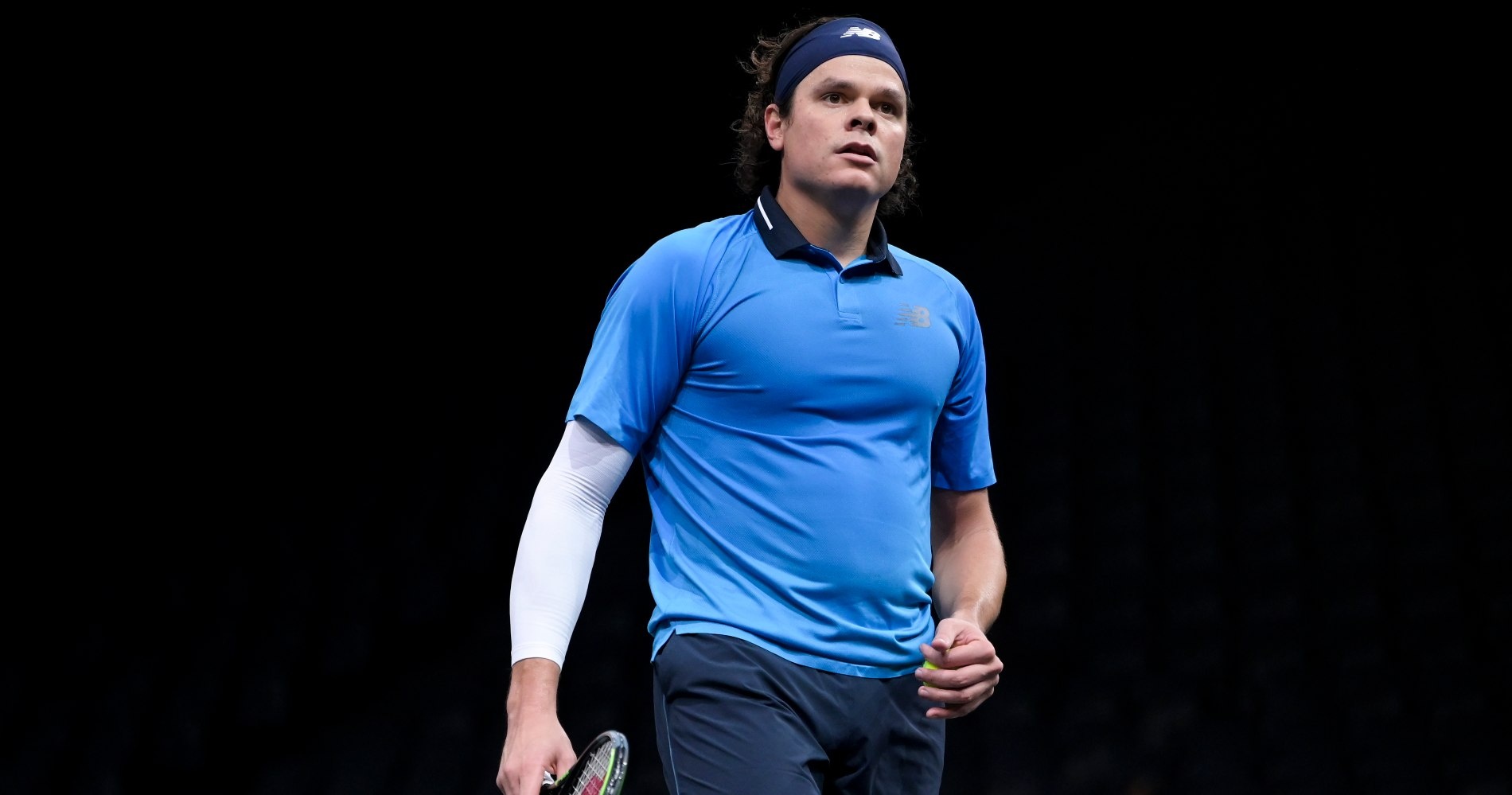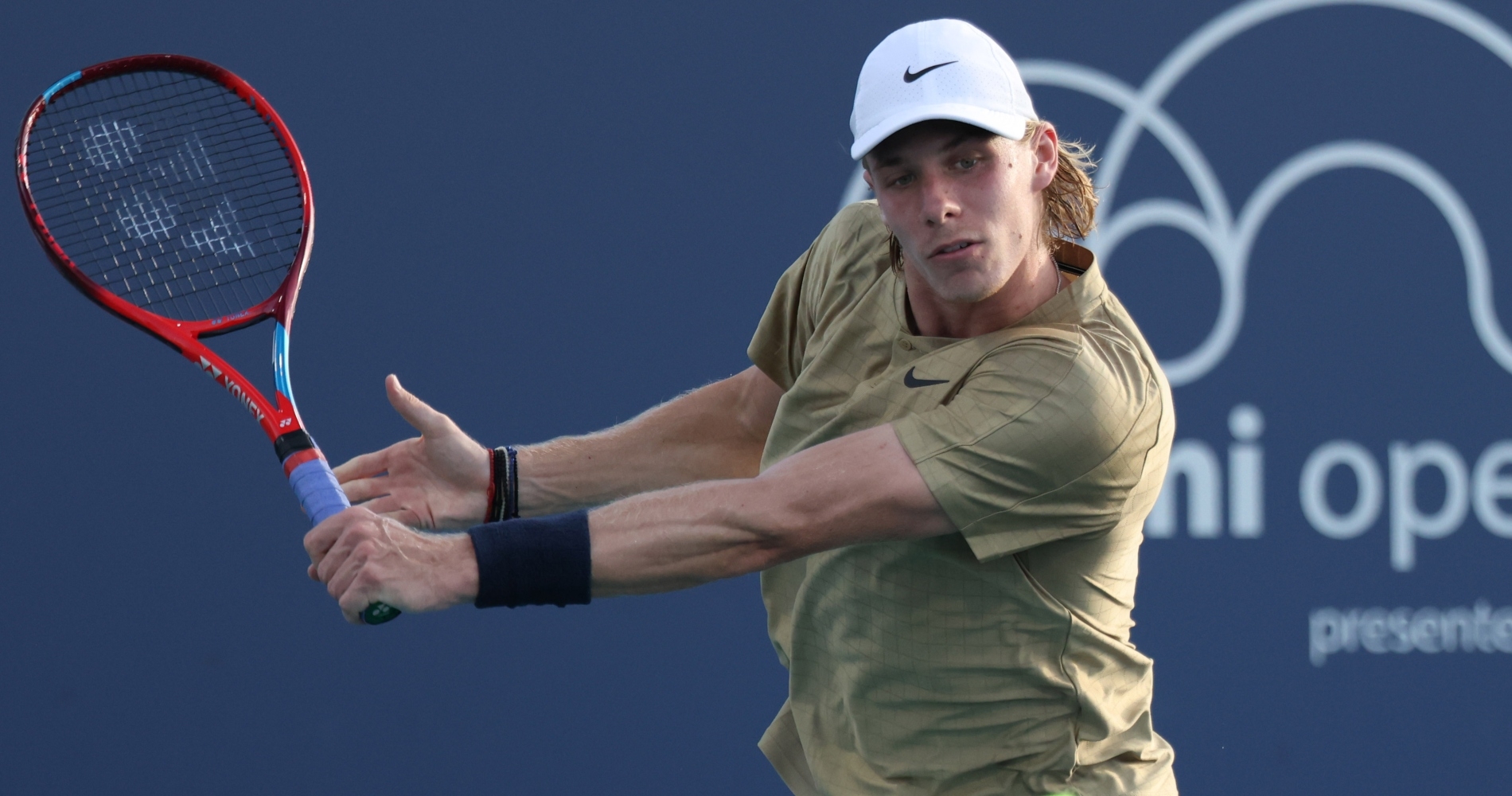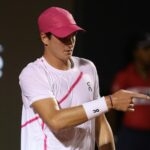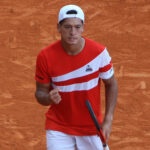Djokovic’s PTPA: Who is for it, and who is against it?
More than seven months after its creation by Novak Djokovic, the PTPA — a players’ union formed as an alternative to the ATP, continues to divide the players. Those divisions have been amplified during the Miami Open, where discussions related to prize money have cause tensions to rise.
 © Panoramic
© Panoramic
The Professional Tennis Players Association was launched in the summer of 2020 at the US Open. Three months later, by the time of the Nitto ATP Finals, it was identified as a direct rival to the ATP Tour. ATP-PTPA relations only appeared to get worse this March at the Miami Open, where Vasek Pospisil alleged that ATP chairman Andrea Gaudenzi yelled at him for an hour and a half at a pre-tournament meeting.
In June, Popsisil and PTPA co-founder Novak Djokovic announced the appointment of an executive director, named an advisory board, and enlisted a PR company to carry out its branding and communications.
Needless to say, the PTPA has become a major topic of tension on the men’s tennis circuit.
Although the PTPA does not officially refer to itself as a union, it is difficult to view it as anything other than that. It presents itself as a group defending the interests of pro players, with that being its one and only objective.
Dating back to November, it has been clear that it is just about impossible for a player to support both the PTPA and the ATP. Djokovic had indicated, after his loss to Daniil Medvedev during the group stage of the ATP Finals in London, that the ATP did not allow him to run for the Players Council if he was part of another group such as the PTPA.
Novak Djokovic had more quotes, very interesting, in Serbian, about his return to the @atptour council with @VasekPospisil, and the fact that they will continue PTPA anyway. Thread 👇 pic.twitter.com/216ZTO5B3u
— Tennis Majors (@Tennis_Majors) November 18, 2020
A few weeks later, Kevin Anderson confirmed to us — on behalf of the players on the board — that he felt it was out of the question to work with the PTPA.
The men’s tour is deeply divided on the subject, which takes a lot of energy from the players behind the scenes. Before we evaluate who is for and against the PTPA, let’s recall exactly who is who, who promises what, and what are the fault lines between PTPA and ATP. On the surface they are quite unclear. On March 27, journalist Ben Rothenberg publicly advised the PTPA to hire a communications professional to substantiate the association’s message.
- What is the PTPA? The PTPA is an association for the defence of the interests of professional players, distinct from the ATP. It was officially born in August of 2020 to defend the interests of players (and even female players, Pospisil told us). Its mission is to represent the top 500 singles players in men’s tennis and the top 200 doubles players. The PTPA is of the mindset that the ATP represents the interests of the tour as a whole and tournament organisers. It argues that players do not have enough of a voice in this structure and that the information on the distribution of income is not transparent enough. Without making official mention of the PTPA, John Isner publicly indicated that the ATP was “a broken system” — after which ATP had sought to be transparent about its management of COVID and the distribution of income.
- What is the ATP? The ATP has been the primary administration for the men’s tennis circuit for more than 30 years now. It manages the ATP Tour as well as the Challenger tournaments — the “second division” of men’s tennis — and the ATP Champions Tour, which brings together former legends of the game. It thus decides the calendar and assigns the categories of tournaments (Masters 1000, ATP 500, ATP 250). The ATP is also responsible for the year-end championship. However, it has no power over the four Grand Slam tournaments — which are run by the International Tennis Federation (ITF) and independent organisers. The four majors have a separate place on the calendar but do award ATP points to participants. The ATP was founded in 1972 precisely as the first structure to defend the interests of players against tournament organisers (the ITF, private circuits, etc.) that were thought to have too much power over the calendar. The power of ATP became so great that in 1990 it basically monopolised the entire men’s circuit with the players agreeing to no longer participate in a single tournament that was not managed by ATP. The new circuit was presented by ATP president Hamilton Jordan — Jimmy Carter’s former White House chief of staff — at a famous press conference held in the parking lot of the US Open. The founding idea behind it was to empower the players and tournament directors, represented 50-50 within this new ATP structure.
- What are the differences between PTPA and ATP? The ATP did not react well to reports of the PTPA’s creation. It sees this initiative as a threat. The ATP urged players not to support the new association, according to the New York Times. “The question of a separate association is an extremely important subject which should not be taken lightly,” Gaudenzi wrote in an email sent to all players. Joining it would call into question the existence of ATP, which has been built on the principle of an equal partnership between players and tournaments for thirty years. But many players believe that the ATP is now dominated by the tournaments and even by the bureaucracy of the ATP itself. They also accuse Gaudenzi of having been distant or even altogether absent in recent months during the Covid-19 health crisis (Gasquet had spoken of “disaster”). In a document obtained by the New York Times, the players who joined the PTPA clarified that “the purpose of the PTPA is not to replace ATP, but to provide players with a structure for self-governance, independent of the ATP.”
From the outset, the PTPA was by no means unanimous. Some players, such as Diego Schwartzman and Milos Raonic, were in favour of the new creation — voicing their support last August. However, big names like Rafael Nadal, Andy Murray, and Dominic Thiem opposed it.
Here is the most precise possible list of the players who are for and against the PTPA.
For the PTPA
It was a photo that became a sensation, for better or worse. On Saturday, August 29, 2020, around 8:00 pm local time in New York, Novak Djokovic announced on social networks the creation of the PTPA — with a photo of about 60 players on the Arthur Ashe court in Flushing Meadows.
“After today’s successful meeting, I am excited to announce the establishment of the PTPA,” Djokovic wrote. “The first tennis union made up entirely of players since 1972.”
View this post on Instagram
Included in the photo were Vasek Pospisil (unofficial co-founder), John Isner, Matteo Berrettini, Hubert Hurkacz, and Diego Schwartzman. Schwartzman spoke about it during his week at the year-end championship in London.
“I want to be clear: from my point of view we are not fighting against ATP; in fact, we are absolutely not against it. We’re just trying to work together and maybe have a stronger voice.… Our goal is to make tennis a better sport for everyone. Nothing else.”
Canada’s Denis Shapovalov expressed his thoughts on the subject at the Miami Open, where he told reporters that he felt the players could be represented better.
“I’m definitely on the PTPA side,” Shapovalov said. “I think we are not underrepresented, but I think there is ways that we could be represented better. … I don’t think that the ATP is doing the fullest job that they can be. I think there is other ways and there are players that are trying to introduce or help within the ATP bring in different information or sponsors and this and that, and basically we’re all getting shut down. They are just telling us to go and play tennis which in my opinion it’s not right. They shouldn’t, you know, talk to us like that if we’re partners. And, yeah, that’s my position.”
American Sam Querrey, former top 30 player on the tour, gave his full support to Djokovic.
“I am no longer on the board (of the ATP). I am for the (PTPA). I think in the end it will be a good thing to have an association. Guys have wanted it for 20 years. I hope that things get going — that this will be the first step and that it can achieve some success by putting in some basic principles and getting rule changes.”
Milos Raonic, a semi-finalist at the Rolex Paris Masters, also sided with this new union in an exclusive interview with Tennis Majors during the US Open.
“I support the PTPA because I have the feeling that certain components of the current structure (ATP) — since I have been on tour — have not necessarily brought the benefits that we wanted. I don’t think it’s a fight of any kind…. I think a lot of us are now much more on the same page and we want to be represented in a unified way. There have been things…I have expressed my opinion on some aspects that have happened even during the coronavirus crisis…which has been overwhelming, by our organization. But I am not trying to choose these fights. I think it’s good that we have a unified voice on this. “

At the US Open, runner-up Alexander Zverev also had a very favourable opinion of Djokovic’s initiative.
“I didn’t sign the paper, but I think it’s a good thing the players want to come together. I think it’s great that we can be more united. I have to give credit…whether someone signs the paper or not is their decision…but I have to give credit to Novak and Vasek, because a world No 1 has other things to do than take care of bringing the players together or something like that, not in a union, but within an association. In his position, to be honest, he doesn’t need to; he just doesn’t have to. He can relax and do nothing and everything will be fine. But he cares about the other players, which is great I think.”
Also at Flushing Meadows, Felix Auger-Aliassime spoke about this new association, while remaining more cautious.
“There has been a lot of discussion recently within the group of players. It’s only a beginning. We will see where it takes us. I am really young in this field. I like the unity of the players. I am for this movement, but at the same time it is only a start and we will see where it takes us. I have no more to say for the moment on this question.”
The ranks grew at the Miami tournament in March. Following an incident that saw Pospisil tear into Gaudenzi during his first-round match, many players are came to the aid of the Canadian while proclaiming at the same time their support for the PTPA with the #playersvoice hashtag on Twitter. Ivo Karlovic, Steve Johnson, Ryan Harrison, Taro Daniel (and Daniel’s coach, Sven Groeneveld), and Rajeev Ram all sided with the PTPA.
Unfortunate what happened on court with Pospisil. I was not at the meeting but, from what I heard from players that were there, it’s now more obvious than ever that we need a players only association. #playersvoice #ptpa
— ivo karlovic (@ivokarlovic) March 26, 2021
We need to start supporting player unity on the ATP Tour. With the events that took place in Miami with our leadership we need more now than ever a #playersvoice time for the players to stand together!!
— Steve Johnson (@SJohnson_89) March 26, 2021
. @VasekPospisil is a great guy with a huge heart. He has spent countless hours and headaches on behalf of all players. The stress of what you bring onto the court can be overwhelming while under pressure playing. It’s time that the players voices are heard. #playersvoice #PTPA https://t.co/DG3ETQnoiK
— Ryan Harrison (@ryanharrison92) March 26, 2021
Its very clear that players need a voice! It confuses the public’s because they have never been made aware of the many subtle hidden conflicts. Without a pandemic this would never have come to this point. Maybe as a journalist you could provide the public with all of these issues https://t.co/exiwdtLL9g
— SvenTennis (@sventennis) March 27, 2021
Denis Shapovalov is one of the younger players who went on the record as a supporter of the PTPA.
Against the PTPA
On the day of its creation, a scathing press release was signed by ATP representatives Kevin Anderson, Roger Federer, Jurgen Melzer, Rafael Nadal, Sam Querrey, and Bruno Soares.
“We do not approve of the creation of a new association of players. A new association of players cannot exist alongside ATP.… We are against this proposal, we do not see how it can benefit the players.”
From the other side of the net …. pic.twitter.com/qomnM8ciFk
— Jon Wertheim (@jon_wertheim) August 29, 2020
Nadal, questioned about it during the Nitto ATP Finals, supported what was written in the press release.
“Just because they created this organisation doesn’t mean they help tennis more than other players who believe in the usual structure. If we have experienced positive situations, it is thanks to the involvement of Roger, myself, but also Novak and Andy, because we have always been concerned with asking others what they need. If we compare the earnings of five, six, seven or eight years ago to today, it is clear that we have significantly reduced the gap between the lowest ranked and the best players. We know that we have to continue working on this, but we do not consider that another organisation is necessary.”
The Spaniard had already expressed his opinion that during the coronavirus pandemic it is even more important to be united as opposed to divided. Federer echoed the sentiments of his rival.
I agree @RafaelNadal. These are uncertain and challenging times, but I believe it’s critical for us to stand united as players, and as a sport, to pave the best way forward. https://t.co/foAmiLVrdV
— Roger Federer (@rogerfederer) August 29, 2020
Thiem also gave a nod to the ATP when asked about it in London.
“I like what ATP does. Overall, it’s a very good job. So from my perspective there is no reason to join any other organisation, or anything like that.”

As president of the ATP Players Council, Anderson has a strong opinion on the matter:
“I personally believe that the two entities cannot coexist. We have our structure as it is. I feel like there are a lot of things that need to be improved; I always said that. I have the impression that we have managed to accomplish a lot of things within the structure. I have the impression that the new management that has taken office, its vision is really exciting. There are a lot of unanswered questions. As the weeks go by, I hope we get a better understanding and a better idea of what exactly PTPA is. Obviously there are a lot of players, but how are we going to represent the players on the circuit?”
Murray is also one of those who does not support Djokovic’s project. During the US Open, the Scot pointed out that women are not yet an integral part of this new association, even if that was among the plans announced at the end of August.
“I’m not against a players’ association, but there are two main reasons that will guide me in my choice. First, I think the current leadership should take more time to make their vision known before chasing endorsement and signings. Then there is the fact that women are not part of it. Including women would send a much more powerful message. That is not what we currently have. If these things change in the future, being part of the association is something I would really reconsider.
Feliciano Lopez, who is also tournament director of the Mutua Madrid Open, was revealed to be pro-ATP when he responded to a tweet made by Ram during the Miami Open. responding to a tweet from Rajeev Ram.
Kazakh player Alexander Bublik was asked about the same issue at the Miami Open. While Bublik said he was not 100 per cent in sync with either the ATP or the PTPA, he did claim that he was more on the side of the ATP Tour.
“I’m not with this PTPA or whatever it calls. Definitely not a single organization is perfect. I mean, for me of course, I mean, we could do better, but at the end of a day, ATP providing (for) us, I can’t really say much because I’m not with Novak and I’m not 100 percent with ATP.”
“But for me, I don’t like to put another pressure on myself, other thoughts, thinking, going, we ban this tournament or don’t go there. No. I just want to play tennis. I enjoy my life. I enjoy what I make. Of course, if Novak makes me earn more, I’ll say thank you. But I won’t fight for it, because if they want to fight, they fight. It’s cool.”
“I’m more on ATP side because at least we are playing now, and, you know, they are doing for me — sometimes they do a good job, sometimes they do a bad job.”
Dominic Thiem’s agent, Herwig Straka, also supports the ATP. It should be noted that he is the tournament director of the Erste Bank Open, an ATP 500-level event in Vienna.
“There is an interest of these players in destabilizing the whole environment of the ATP,” Straka said. “This is due to personal interests and discontent of those directly involved. The attitude of Pospisil and the members of the PTPA is unjustifiable and shameful because the ATP is a serious organization in which players have a 50% weight on decisions.”Clearly, not all players are united on the subject – far from it.





